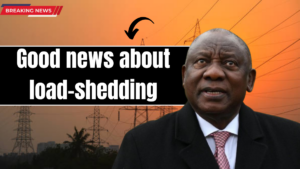South Africa has faced significant challenges in energy generation over the past few years, with frequent load-shedding impacting businesses and households across the country. However, recent developments from Eskom, the state-owned electricity supplier, bring promising news for the future of South Africa’s energy supply. Eskom expects to have the full Kusile Power Station and Koeberg Power Station’s Unit 1 online in the next few months, potentially reducing the frequency of load-shedding and easing the strain on the national grid.

Eskom’s Efforts to Tackle Load-Shedding
As part of its efforts to alleviate power shortages, Eskom ramped up its maintenance plan to ensure its power stations are ready for the winter months. Eskom spokesperson Daphne Mokwena confirmed that several key maintenance actions were completed, leading to a better-prepared generation fleet.
Eskom faced challenges with Koeberg Unit 1, which had been offline since January for scheduled maintenance, including refuelling, in order to comply with safety regulations. Fortunately, Koeberg’s Unit 1 received an extension for operation until 2044 after securing a long-term operational license from the National Nuclear Regulator in August 2024.
Similarly, Kusile Power Station faced several setbacks in 2023 due to a flue duct collapse caused by faulty emission control systems. This led to multiple units being offline, but these units will now return to full operation by June 2025. Kusile is set to provide a total capacity of 4,800 MW for the first time in eight years, bringing much-needed relief to South Africa’s energy crisis.
Key Developments at Kusile and Koeberg
Kusile Power Station, located in Delmas, Mpumalanga, has long been plagued by delays and budget overruns, making it the most expensive coal-fired power station ever built. Construction, which began in 2008, has been marked by issues such as inefficient project management, labor disputes, and corruption. Despite these obstacles, Eskom continues to push forward with the project, with Unit 6 expected to be synchronised to the grid by March 2025.
Once fully operational, Kusile and Koeberg will add significant capacity to the grid. Koeberg Unit 1, a nuclear facility, is expected to provide 970 MW of reliable power, while Kusile’s six units will collectively add 4,800 MW to South Africa’s generation capacity.
What This Means for South Africa’s Energy Future
With the return of these power stations, Eskom aims to reduce the need for frequent load-shedding across the country. Chris Yelland, an energy expert, noted that while Kusile’s development has been fraught with issues, its completion will be a crucial milestone for the country’s energy recovery.
The addition of power from both Kusile and Koeberg will contribute significantly to South Africa’s efforts to recover from the energy crisis and reduce load-shedding. Eskom has already made plans to further improve its grid’s reliability, with additional maintenance and capacity expansion projects underway.
Eskom’s success in stabilizing the power supply will play a pivotal role in boosting the national economy and improving the quality of life for millions of South Africans who have been impacted by rolling blackouts. It is also expected to lead to a reduction in electricity costs, making energy more affordable for both households and businesses.
Conclusion
The ongoing efforts to bring Kusile and Koeberg online mark a significant achievement for Eskom and the South African energy sector. With long-term plans for improving generation capacity, maintenance, and infrastructure, Eskom is working hard to end the cycle of load-shedding that has plagued the country for years. While challenges remain, the efforts to bring these power stations online signal hope for a brighter, more stable energy future for South Africa.
FAQs
Q1: What is load-shedding, and how does it affect South Africa?
A1: Load-shedding is a rolling blackout strategy implemented when there is insufficient electricity supply to meet demand. It disrupts daily life, affecting businesses, schools, and household activities.
Q2: How does the Kusile Power Station contribute to reducing load-shedding?
A2: Kusile is set to add 4,800 MW to South Africa’s electricity grid, which will significantly alleviate power shortages and reduce the need for load-shedding.
Q3: What is Koeberg’s role in the power supply?
A3: Koeberg’s Unit 1 provides 970 MW of nuclear power, contributing a stable and reliable energy source that supports South Africa’s overall power generation capacity.
Q4: Why has it taken so long to complete Kusile?
A4: Kusile’s development faced numerous delays due to issues like poor project management, labour disputes, and corruption. However, the plant is now on track to contribute significantly to the grid.
Q5: How will these developments impact the South African economy?
A5: The stabilization of the energy supply will boost economic growth, improve business productivity, and enhance the overall quality of life by reducing the frequency of power outages.
Click here to know more.
Aanchal is a passionate writer with a keen interest in storytelling, content creation, and creative expression. She enjoys exploring diverse topics and crafting engaging narratives that captivate readers.

